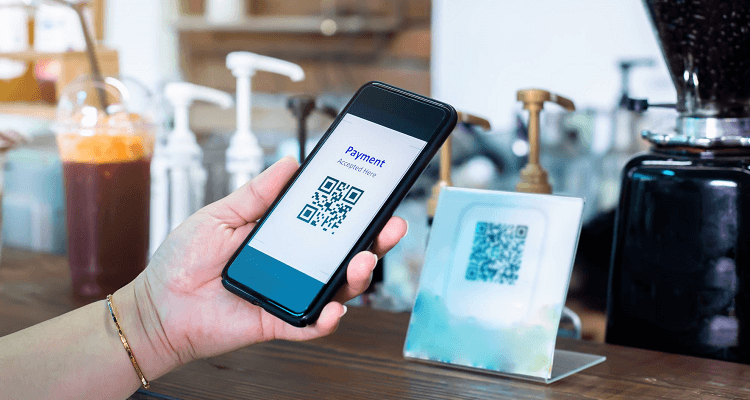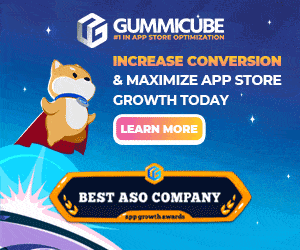QR codes designed to open apps are suddenly front and center for marketers and agencies. About ten years ago, QR codes simply didn’t work that often – mainly because the phones couldn’t scan them without a separate scanning app. Well, that’s all changed.
Today, iPhone and Android cameras support scanning QR codes and that presents a perfect marketing opportunity for apps, while the codes themselves are getting more customized and branded, appearing everywhere from print ads and packaging to television and retail displays. Advertisers are not just selling products or services but app experiences, and the QR code is the key to install or open the app.
But guess what? For marketers, QR codes are still easy to get wrong. The points of failure increase exponentially when using a QR code generator that doesn’t have app-related features. If you’re planning a QR code strategy for your app, this article is for you and explains the pitfalls and how to optimize QR codes for a great app experience that will acquire and retain customers.
Here are 5 things to consider as you embark on a strategy.
- Avoid mobile website login friction
A common mistake when creating QR codes for apps? They don’t open the app! Instead, the QR sends the user to the app’s website login or to a landing page. This is especially annoying for users that already have the app installed and your conversion will suffer greatly.
It’s important to remove clicks and friction in the QR experience. Your QR codes should open the app if it’s installed and fallback to a web URL or the right app store depending on the goals of your campaign. The fallback setting for when the app is not installed is something your marketing team or agency should control and be able to update at any time.
- Get your QR density right every time
The number of pixels in your QR code affects the density and size like in the examples below. QR density affects the ability of your customers to scan the QR code successfully at the distance for your use case.
Lower density codes are typically more functional at long distances, or on a small display size, especially for older devices with lower resolution cameras. A higher density QR code will get more scans at closer ranges, like on product packaging or direct mail. Adding your logo or including UTMs on the link for tracking? That affects density too, which means your QR may be too dense to be scannable by your target customer. Tracking tags can be appended to the redirect destination post-scan, so make sure your QR platform supports this capability.
The key is to choose a QR solution that lets you have control over both the density of your code and tracking of your results. Watch out for free bulk QR code generators that will choose the density for you. Your QR code will be made with a lot of guesswork and assumptions about your use case. This creates a big opportunity for a QR code fail. Test different densities and always ask your QR platform for advice.
- Campaigns change so make sure your QR codes can too
Marketers are learning that creating QR codes cannot be the last step in the campaign process. Getting your QR code right to ensure maximum scanning requires careful planning with experts. Your creative team, your web and app teams and of course your printer all have their own timelines and plans often change.
Fuel Mobile Growth: Data-Driven Solutions & 14+ Years Expertise 📈
Tap into exclusive mobile ad units, powerful integrations, and a team of experts for strategic campaign management. Maximize your ROI today!
Start Your Campaign Now 📈Whether your QR code opens your app, your website, or the right app store, make sure the destination is dynamic and your marketing team can update that destination and/or tracking tags in real time without having to change the actual QR code which is likely already at the printer or in production.
Pro Tip: Use your brand’s domain for your QR codes. If your customers see an unfamiliar domain when they scan the link, they may be reluctant to click, which will negatively impact conversion. Plus, using your brand simply looks more professional.
- Make QR codes part of your deferred deep linking strategy
Don’t think of QR codes as simply a shortcut. The offer surrounding the QR code should inspire the user to want to take a precious moment out of their day to scan. Deferred deep linking refers to installing the app and then upon opening the app for the first time, being routed to a certain screen.
Deferred deep linking combined with an incentive is a popular way to inspire people to install an app. Why not connect your incentives to your QR code strategy? For example, “Install the app and get a 50% discount off your first purchase”.
The user should scan the QR code, be routed to the right app store to install the app and then when the app is opened for the first time, the screen with the offer is presented. Your marketing team can make this easy on your technical team with a platform that does not require an SDK to manage but only few lines of code to place in your app.
And how about tracking? Your QR code analytics should present scans separately from clicks in reporting while letting you track, and attribute app installs via the consoles for the Apple App Store and Google Play. You should also be able to append any tracking parameters to pass through to your app and/or your website analytics platform. All with a single QR code.
- Privacy rules apply to QR codes too
Privacy is a hot topic in the advertising and app ecosystems. Marketers may typically think of privacy in the context of links and cookies and may not realize the same rules apply to QR codes and that’s because there’s a link behind every code.
Are you thinking about using a free QR code generator? Beware, because that platform might be dropping pixels and tracking your customers around the internet and then selling your data for remarketing. Choose a platform that is aligned with today’s strict privacy policies, so you don’t run fowl of any rules which will no doubt change further.
QR codes are becoming a central strategy for app marketing. Get ahead of the curve and start planning a comprehensive strategy now. Challenge your marketing and product teams to implement QR codes in innovative ways that connect the physical and digital worlds while showcasing your app’s unique value proposition.
The right QR strategy combined with the right platform will set you off on a path to reach your app install and engagement goals faster and with fewer headaches for you marketing and technical teams.
Perhaps most importantly, you’ll delight your customers with every scan.














